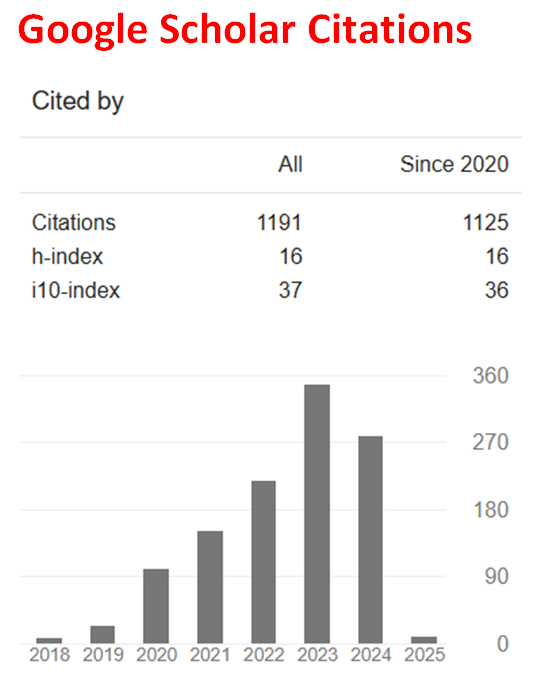A Mathematical Logistic Model Describes Both Global CO2 Emissions and its Accumulation in the Atmosphere
Abstract
A single kinetic model, of a logistic nature, is able to describe two different phenomena: the global emission of CO2 due to the combustion of fossil fuels and the observed accumulation of CO2 in the atmosphere. Unexpectedly, the analysis of the experimental data clearly shows that the two rates of emission and accumulation are almost exactly in phase and differ by a constant factor. The fraction of CO2 that accumulates in the atmosphere is constantly equal to 65% of the emissions. The same percentage also applies to the rate of change of the two phenomena, i.e., the accelerations.
References
Hansen, J., Sato, M., & Kharecha, P. (2023). Good news for young people about climate change and a thank you. Climate Science, Awareness and Solutions, CSAS Columbia.
IEA, International Energy Association. CO2 emissions 2022 – analysis.
Neftel, A., Friedli, H., Moor, E., Lotscher, H., Oeschger, H., Siegenthaler, U., & Stauffer, B. (1994). Historical carbon dioxide record from the Siple Station ice core (1734-1983). In Trends: A Compendium of Data on Global Change (CDIAC, Oak Ridge National Lab., U.S. Dept. of Energy, Oak Ridge, TN, USA). https://doi.org/10.3334/CDIAC/ATG.010
Friedli, H., Lötscher, H., Oeschger, H., Siegenthaler, U., & Stauffer, B. (1986). Ice core record of the 13C/12C ratio of atmospheric CO2 in the past two centuries. Nature, 324, 237-238. https://doi.org/10.1038/324237a0
Tans, P., & Keeling, R. (2022). Trends in atmospheric carbon dioxide. NOAA/GML [gml.noaa.gov/ccgg/trends/] and Scripps Institution of Oceanography [scrippsco2.ucsd.edu/].
Avrami, M. (1939). Kinetics of phase change. I. General theory. J. Chem. Phys., 7, 1103-1112. https://doi.org/10.1063/1.1750380
Tobin, M. C. (1974). Theory of phase transition kinetics with growth site impingement. I. Homogeneous nucleation. J. Polym. Sci. Polym. Phys. Ed., 12, 399-406. https://doi.org/10.1002/pol.1974.180120212
Mazzullo, S., & Fait, A. (2013). Una riflessione sul mercato globale del polipropilene: Il picco di Hubbert. La Chimica e l’Industria, 95(7), 120.
Mazzullo, S., & Paganetto, G. (2021). Epidemia di coronavirus Covid19 causata da SARS-COV-2 in Cina. Italian Journal of Pure and Applied Mathematics, 46, 768-780.
Bellman, R., & Roth, R. (1983). Quasi-linearization and the identification problem. World Scientific.

This work is licensed under a Creative Commons Attribution 4.0 International License.
.jpg)

